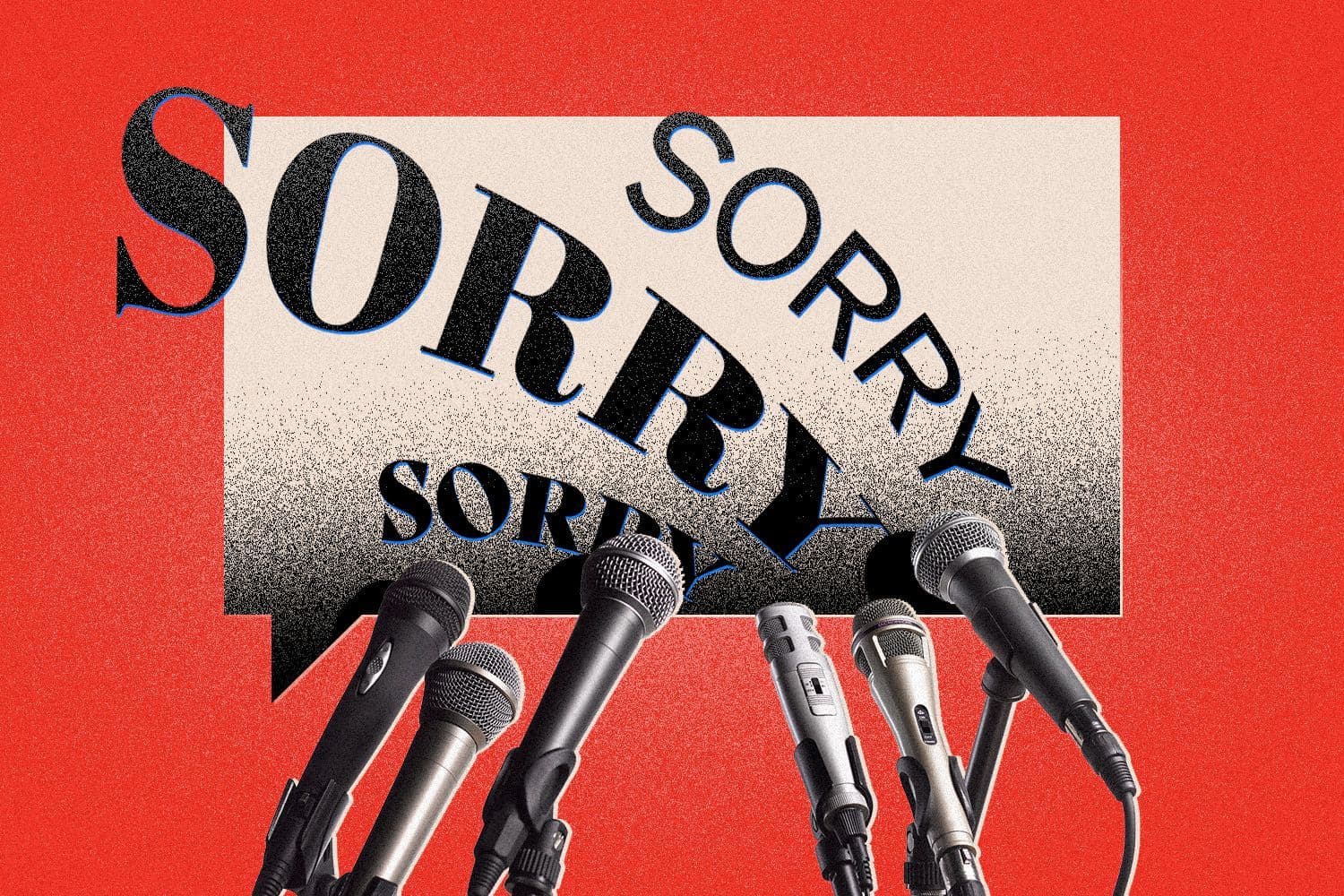Sorry city. What is the best way for a CEO to apologize?
Some CEOs have gone viral for the way they address employees on video chats. Meaningful apologies go beyond mere words, this business professor says.

Francis Scialabba
• 3 min read
Most CEOs don’t expect a rant delivered over video chat to go viral. But they probably should. Recent events indicate that, if recorded, video can boomerang around the web and land back on a leader’s doorstep. Sometimes, the public outcry will necessitate an apology.
Recently, Andi Owen, CEO of furniture maker MillerKnoll, sparked widespread criticism when she implored employees not to wallow in “pity city” after they learned that none of them would receive a bonus this year. “Spend your time and your effort thinking about the $26 million we need, and not thinking about what you’re going to do if you don’t get a bonus,” Owen said in the video. “I had an old boss who said to me one time, ‘You can visit pity city, but you can’t live there.’ So, people: Leave pity city.”
After a social media pile-on ensued, Owen apologized to her employees in an email, writing, “I feel terrible that my rallying cry seemed insensitive…What I’d hoped would energize the team to meet a challenge we’ve met many times before landed in a way that I did not intend and for that I am sorry,” CNN reported.
Screenshot/Youtube
Apologies from top brass need to make clear overtures to a direct audience, such as shareholders, employees, or the public, Fred Foulkes, professor of management and organizations at Boston University’s business school, told HR Brew. But for a mea culpa to resonate with any group, words need to extend beyond rhetoric and convey a sense of growth from the experience, Foulkes said. If “they admit to their troops that, ‘Hey, I’m vulnerable. I make mistakes, too. I try to learn from them,’ that says a lot,” he told HR Brew.
Quick-to-read HR news & insights
From recruiting and retention to company culture and the latest in HR tech, HR Brew delivers up-to-date industry news and tips to help HR pros stay nimble in today’s fast-changing business environment.
Zooms gone wild. Consider James Clarke, CEO of marketing and tech firm Clearlink, who seemingly praised an employee for selling their family dog in order to RTO, or Better.com CEO Vishal Garg, who summoned 900 employees to a Zoom call only to swiftly terminate the entire group. (Garg later apologized and took a brief leave of absence.) As many have posited, there is a trend of executives facing increasing scrutiny for insensitive rhetoric that disrespects their employees captured on video.
How to say sorry. To address and hopefully mitigate whatever tension might be lingering after a gaffe, leadership needs to go beyond mere words, Foulkes said. “Whatever happened, we want to minimize the probability of this happening again. So, you’ve got to say, ‘These are the credible steps we’ve taken.’” Announcing an investigation into a pay equity, for example, can show the public and employees a sense of urgency. “Otherwise, [it shows] the company isn’t really doing anything, it’ll probably happen again,” he said.
Importantly, a sorry needs to convey a sense of understanding of what an audience needs to hear. It’s a question of considering “the customers, the community, investors, [and] employees—how you tailor these things for the different communities,” Foulkes noted. Ultimately, tailoring an apology “to what the audience wants to know [and] needs to know,” is a good place to start the healing process.—SB
Quick-to-read HR news & insights
From recruiting and retention to company culture and the latest in HR tech, HR Brew delivers up-to-date industry news and tips to help HR pros stay nimble in today’s fast-changing business environment.